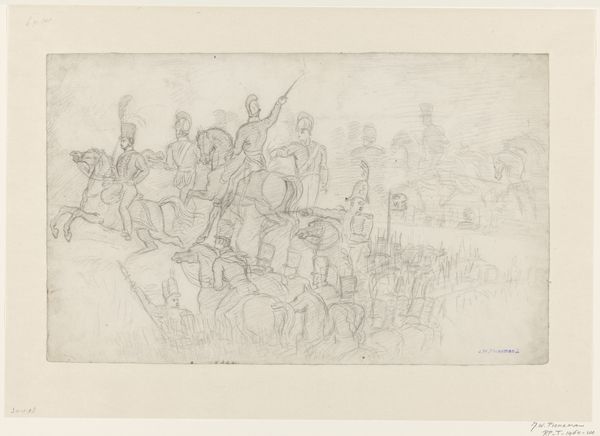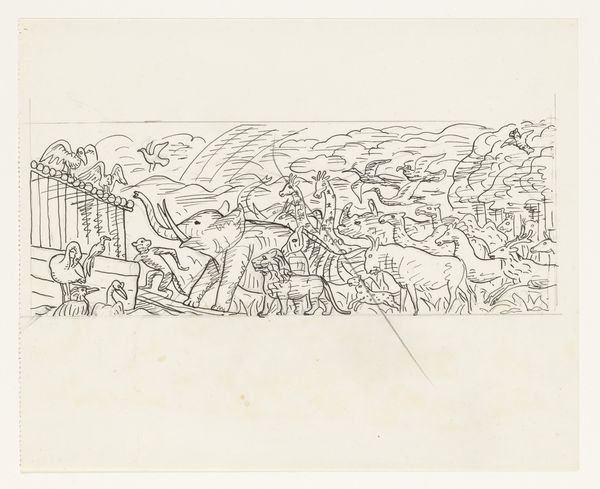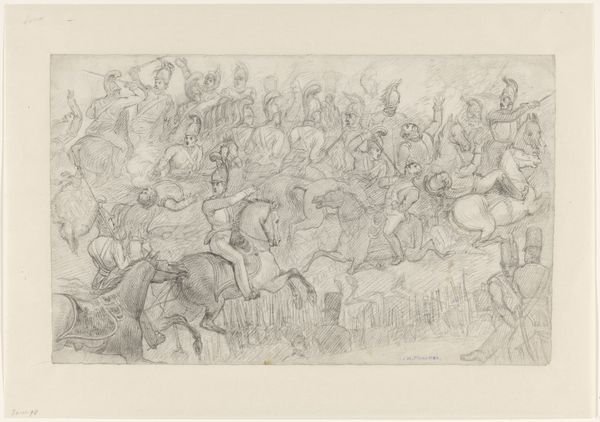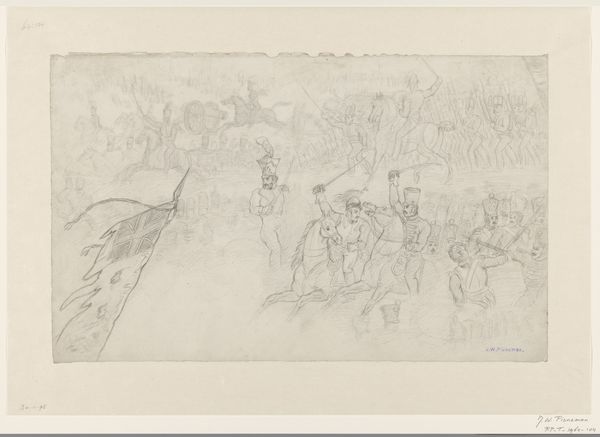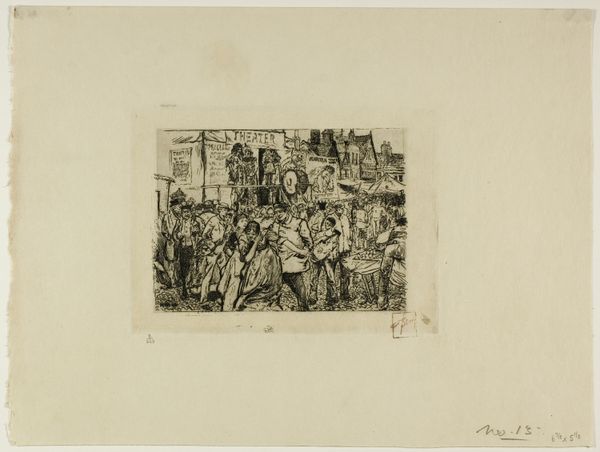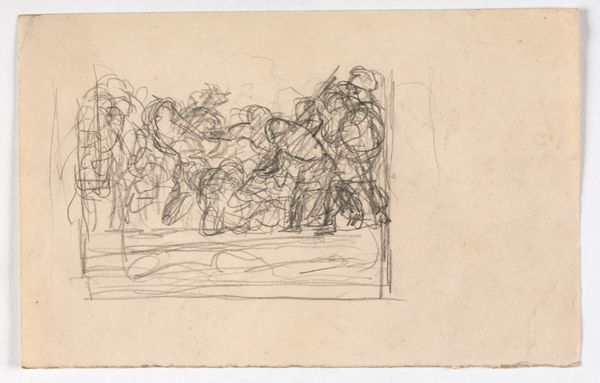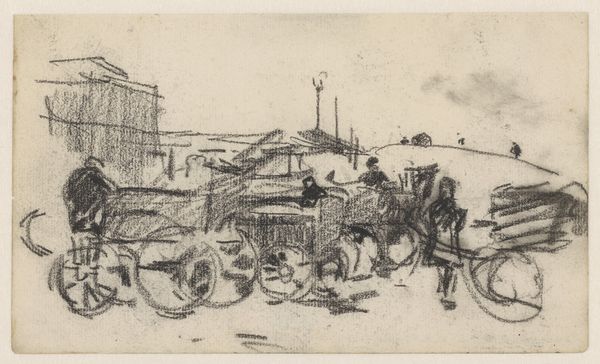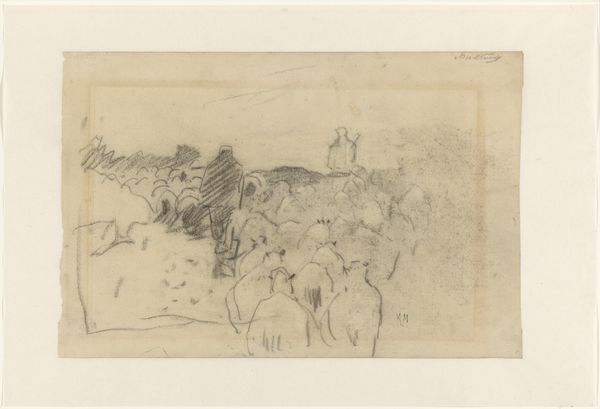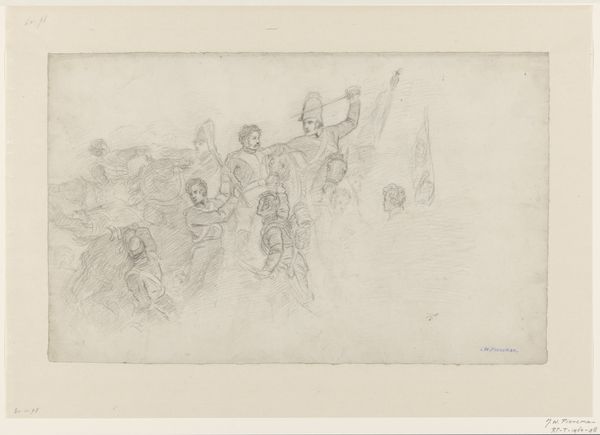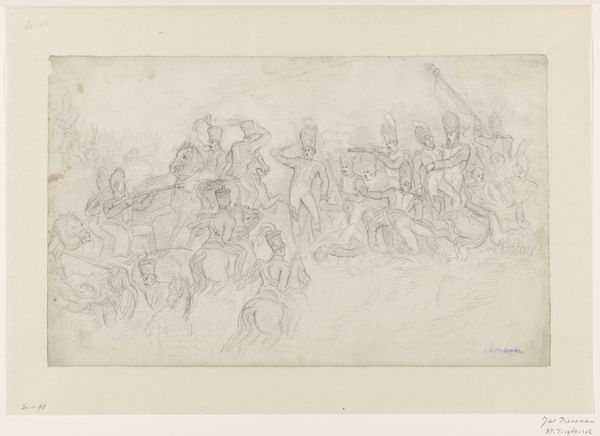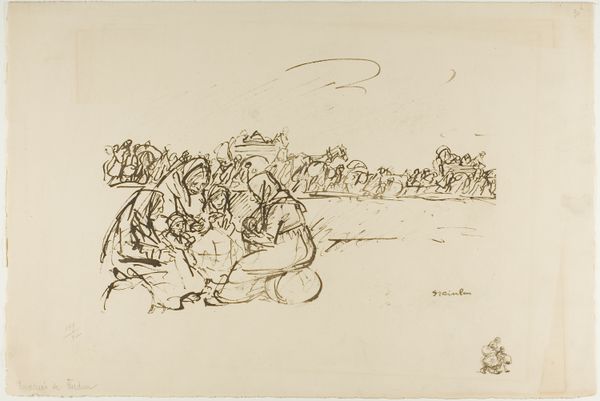
drawing, print, pencil
#
drawing
# print
#
pen sketch
#
pencil sketch
#
etching
#
pen-ink sketch
#
pencil
#
history-painting
#
academic-art
Dimensions: height 297 mm, width 481 mm
Copyright: Rijks Museum: Open Domain
Curator: This drawing, a detail from "The Battle of Waterloo" by Jan Willem Pieneman, made between 1789 and 1853, offers a glimpse into the artist's process. Executed in pencil, etching, and pen and ink, it's currently held here at the Rijksmuseum. Editor: It feels…raw. You can almost hear the cries of the soldiers. There's a visceral immediacy that the unfinished nature of the sketch seems to amplify. The chaotic arrangement really brings you into the action. Curator: Precisely. Consider the means of its creation. The lines are delicate, yet convey the density of a battlefield. The tools—pencil, pen, etching—they each lend a distinct quality to the varying textures within the piece, reflecting the varied materiality of war itself, of metal against flesh, smoke against earth. Editor: Right, and beyond the tangible, the drawing reflects the social construction of warfare, particularly through the uniforms, the clear hierarchy evident in the figures, and the emphasis on nationhood during a time of massive European upheaval. The bodies huddled around the cannon underscore how individuals are subsumed within the larger apparatus of war. We should think about its use and consumption—to educate viewers and perpetuate colonial myths around war. Curator: Absolutely. Also, let's observe the way Pieneman renders the figures. There is very little romanticism here; we see exertion, pain, desperation. Think about the labor involved—not only in the depicted scene, but also in Pieneman's meticulous, if unfinished, recreation of that moment. He used these sketches to later create monumental paintings valorizing the Dutch monarchy for resisting Napoleon, which contrasts with these rough pen drawings. Editor: I agree. The historical weight here can't be ignored, from the manufacturing of arms to the literal bodies that operate it. This wasn't simply a heroic clash, it was state-sponsored violence enabled by complex systems of exploitation and power, and rendered accessible through drawing, etching, and print. Curator: Well put. Ultimately, this piece allows us to delve into the layered processes through which history, trauma, and the artist's vision converge. Editor: Leaving us to consider, whose story are we really seeing amidst the chaos? Who gets written into the historical canon, and what remains in the margins of production?
Comments
No comments
Be the first to comment and join the conversation on the ultimate creative platform.
